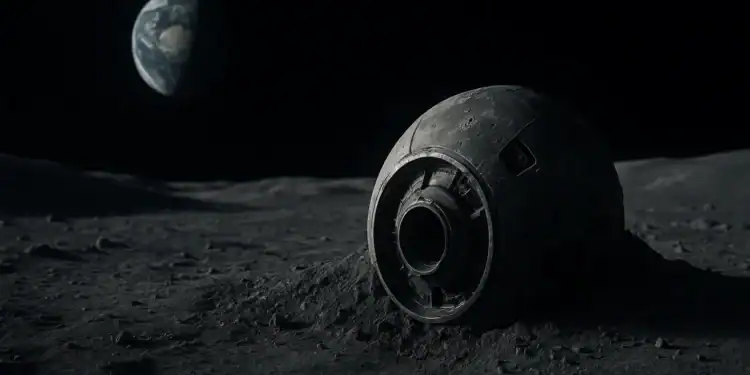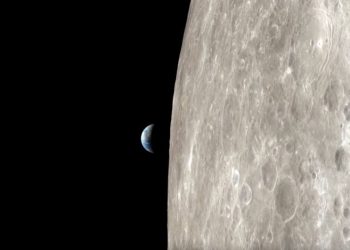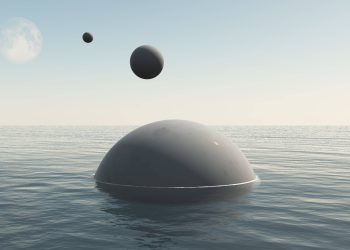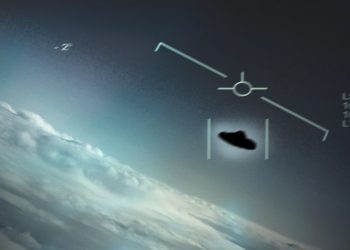The Moon is not a dead rock hanging in the sky, but rather the cosmic attic of the inner solar system, quietly storing whatever has fallen onto it for billions of years, including — just possibly — something not from around here, because the Moon is airless, dry and geologically inactive, it is nearly unchanging, with no rain, no wind, no oceans, no plate tectonics, which means that if something lands on the Moon, it remains preserved for eons beneath the dust. Now we know that there are visitors to our solar system, such as ʻOumuamua and 2I/Borisov, and we’ve even sent our own interstellar emissaries, the Voyager spacecraft, drifting into the vast expanse beyond the solar system, so the idea that someone else might have done the same is not wild science fiction anymore. If future missions dig more deeply into the Moon’s buried history, they may find more than rock and regolith, they may find a story, because for most of human history, the Moon was a symbol — a guide, a mystery hanging in the sky above us.
Dust, rock, silence
Then we landed in 1969 and discovered just what we expected: dust, rock, silence, but did we look close enough, because the Moon is a time capsule, formed more than 4.5 billion years ago, it has been sitting there, virtually unchanged, watching as the solar system unfolded, while Earth is constantly erasing its own past in the processes of weather and plate tectonics, which is not the case with the Moon. If you’re hunting for ancient artifacts — natural or technological — you start where things can survive, and the Moon is one of the best preservation sites we have, because it keeps secrets really well. Now imagine a civilization sending out long-lived probes by the thousands, the way we have sent a few Voyagers and Pioneers, most of those probes will pass through star systems without ever being noticed, but a few would get yanked inward by gravity, and if one ever smashed into Earth, chances are it would burn up, sink to the bottom of the ocean, or get subducted by tectonic recycling, however, on the Moon, there’s nowhere for it to go, a high-velocity impact would be sure to shatter it, yes, but smaller fragments could survive, and odd alloys, engineered shapes, buried pieces, safely stashed under meters of lunar regolith, not because anyone tried to hide them, of course, but just because the Moon keeps secrets really well.
It’s not the only place to look, because the airless moons of Jupiter and Saturn could also be good candidates, and we used to think interstellar visitors were purely theoretical, then, in 2017, ʻOumuamua rolled in, with its odd acceleration and lack of a comet-like tail, and in 2019, 2I/Borisov appeared, with a more conventional comet appearance but weird chemistry, and there’s even evidence that an interstellar object slammed into Earth in 2014, so if we can spot three in under a decade, how many more have we missed, and how many might have hit the Moon over geological time, while the lunar surface is under constant bombardment by micro-impacts, which, over billions of years, has ground rock down into a fine soil called regolith, which can be several meters thick. If anything unusual fell in a remote area long ago, it could be buried under that blanket, still intact enough to be recognizable — a small sensor, a shard of metal, a material that doesn’t match any known lunar geology, therefore, the problem is that we haven’t really scratched the surface, because Apollo missions sampled six small sites, and most modern missions map from orbit or land at a few points, that’s it.
The next BIG wave
That’s why the next wave is important, because NASA’s Artemis program, which aims to return people to the Moon and stay longer, is in development, and China’s Chang’e missions are pushing farther, including sample returns and south polar targets, while India, private companies and others are in on the act, so we’re mapping, drilling and scanning in ways we never have before, however, the Moon is big — more than 38 million square kilometers, plenty of room to hide surprises, consequently, give it time and we might see a new kind of exploration take shape: lunar archaeology, not just the history we left behind — Apollo descent stages, rover tracks — but a search for anomalies, patterns that don’t fit, materials that don’t belong, signals that stand out, and if even one fragment of non-human engineering turned up, it would rewrite our place in the universe, we wouldn’t have to go light-years to find proof, all we’d have to do is go back to the place we already visited — and dig a little deeper. It’s natural to keep looking out there, listening for whispers from radio frequencies coming from nearby stars and pouring over the latest exoplanet data, but what if the first clue we need is not far away at all, what if it’s three days from Earth, hidden beneath a quiet blanket of dust, therefore, the stars can wait, for now, it’s time to start digging.











